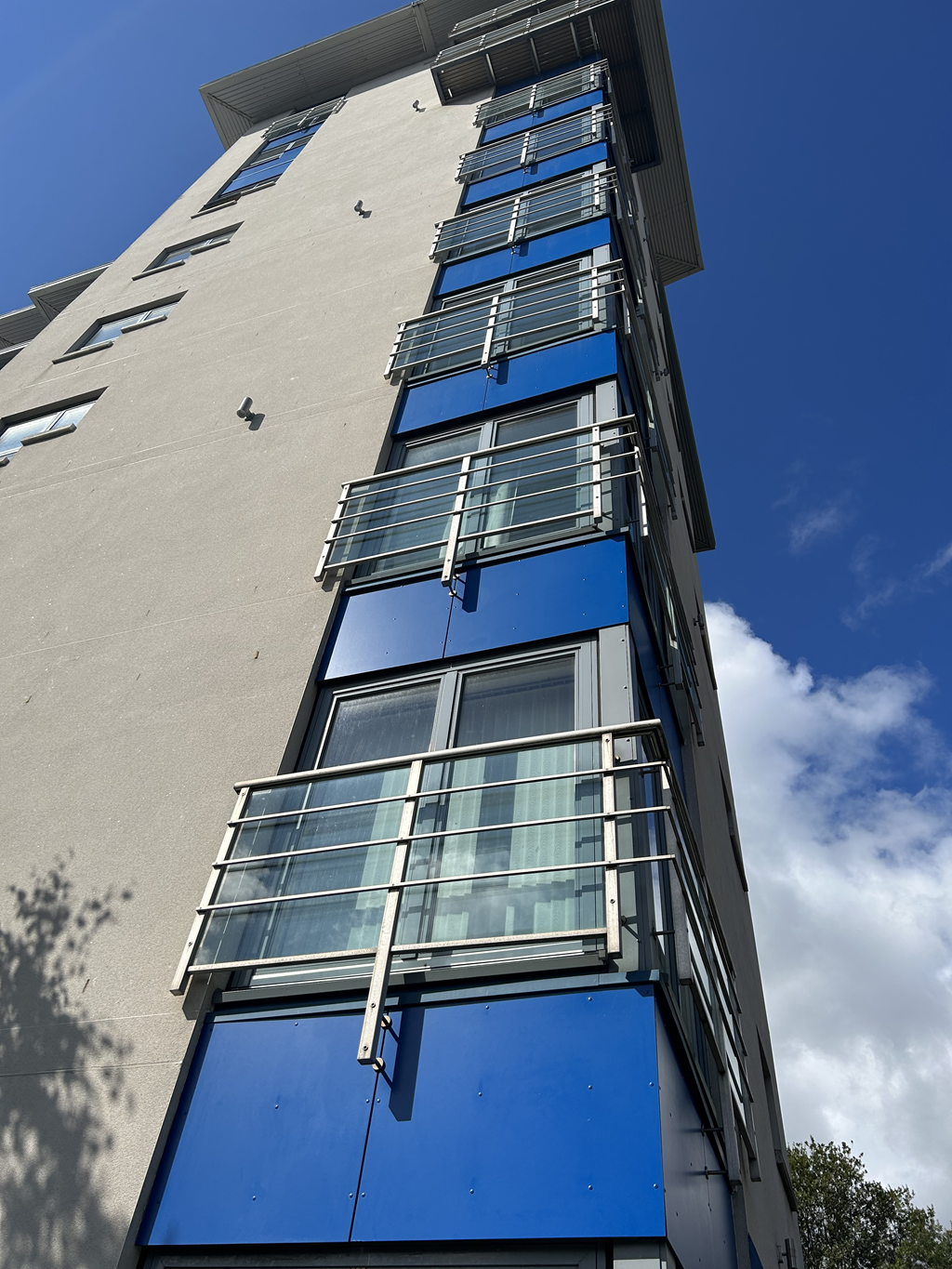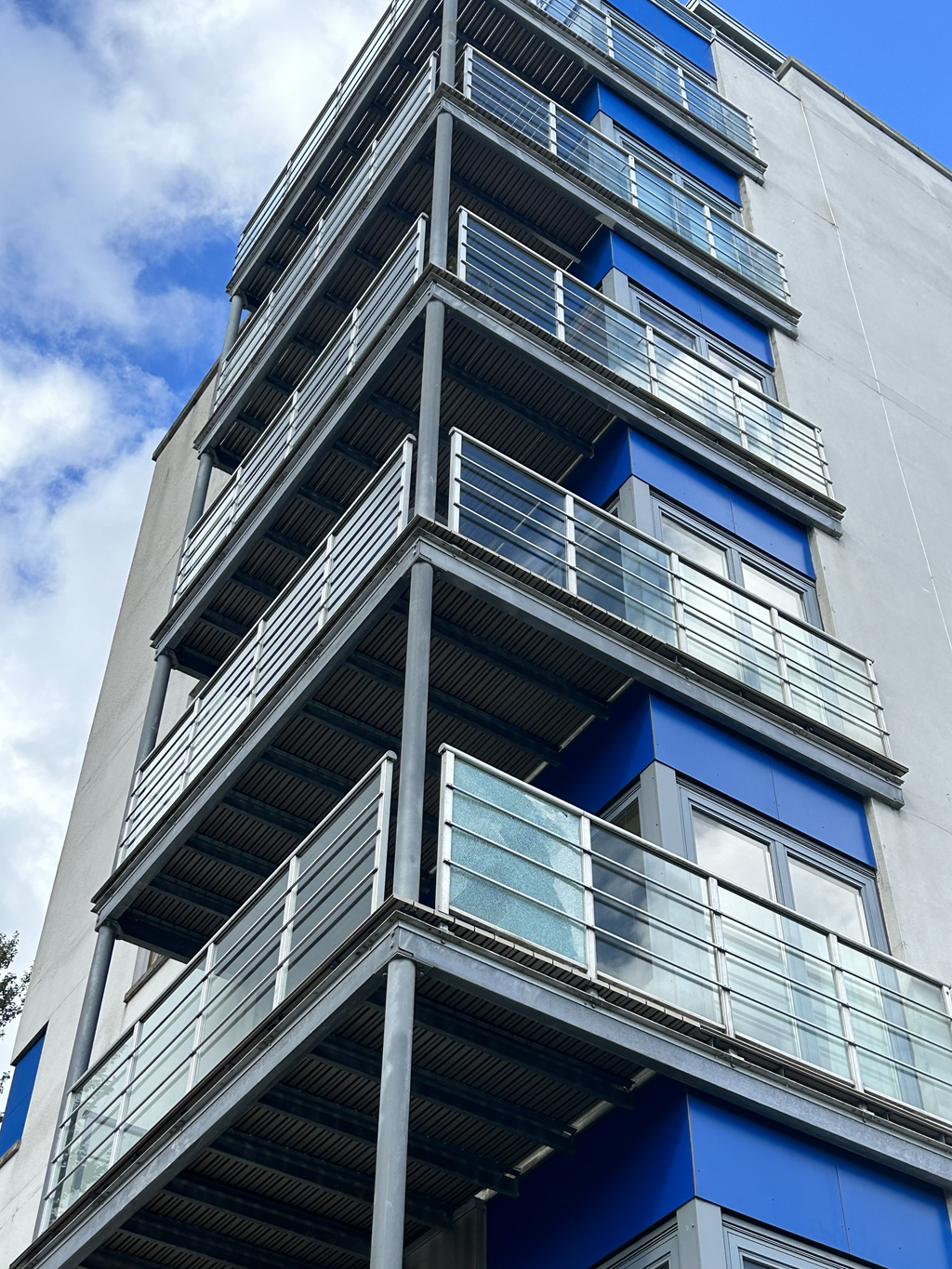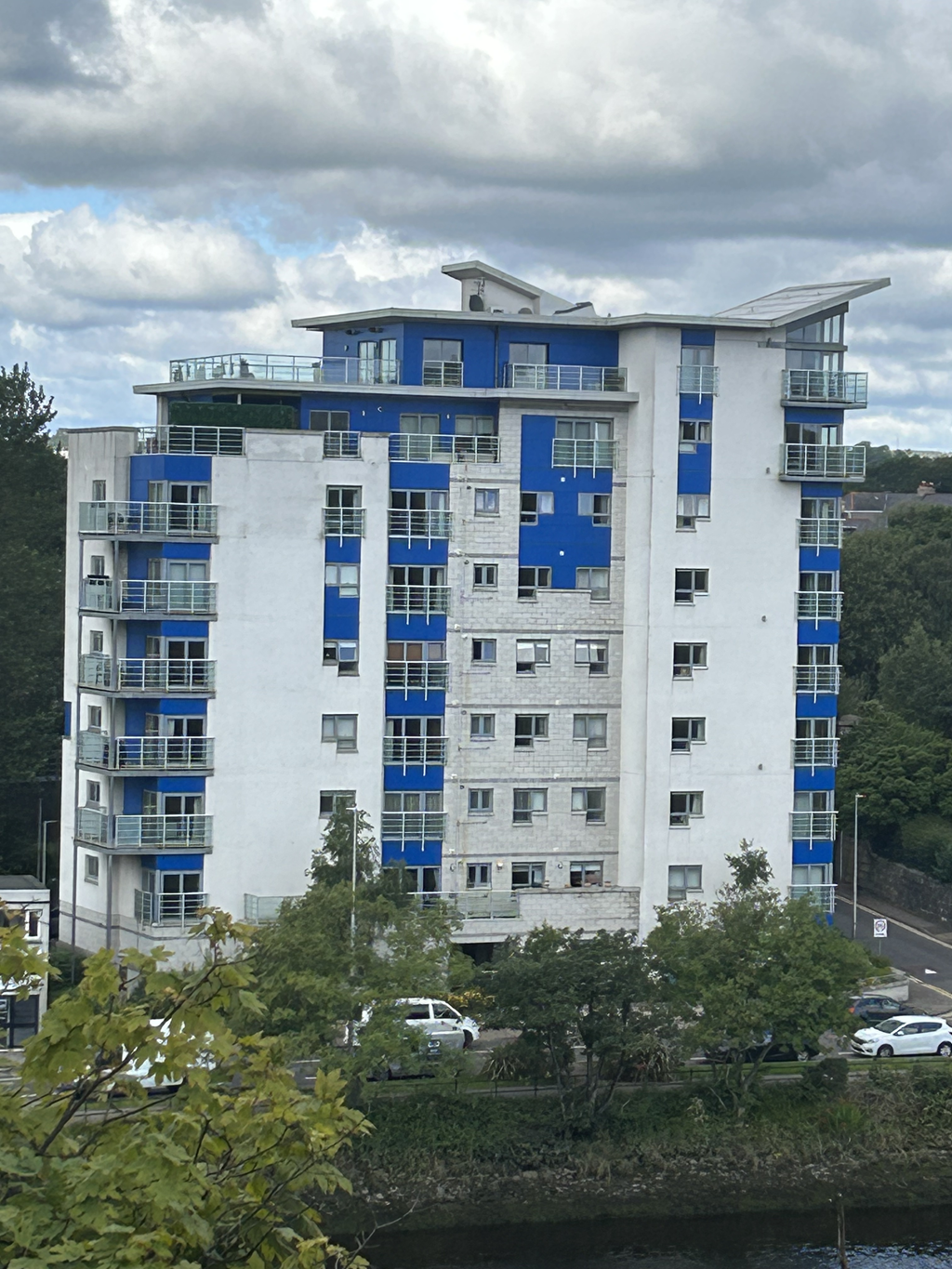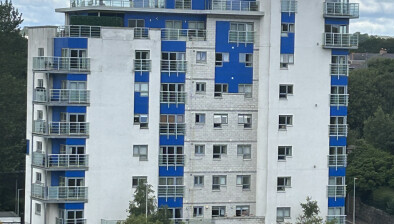Flammable cladding present on ‘thousands’ of Scottish high-rises, research reveals

Cladding has been replaced on the Aurora Apartments in Aberdeen
More than 5,000 ‘high-rise buildings’ in Scotland, including landmark developments such as Glasgow Harbour and Edinburgh’s Western Harbour, are estimated to be covered in flammable cladding, it has been revealed.
Using information gathered over several years from their extensive database of high-rise buildings in Scotland, chartered building surveyor and chartered fire engineer Diamond & Company (Scotland) Ltd has produced figures that reveal the true extent of the problem of dangerous cladding.
According to the company’s research, around 5,500 private and public buildings across the country taller than 11m (36ft) have flammable cladding.
It is estimated that around 25,000 people living in flats in high-rise buildings – defined as five storeys or more - are affected. The predicted bill for removing and replacing the combustible cladding with safe materials is expected to eventually reach £7.5 billion in Scotland.
The research has been published following the publication of the final report of the Grenfell Tower public inquiry into the 2017 fire that killed 72 people.
Seven years on from the tragedy, in Scotland only one building has had its cladding stripped and replaced.
The nine-storey Aurora Apartments in Aberdeen are one of several ‘high priority’ buildings in Scotland to be identified in the Scottish Government’s pilot programme on cladding remediation as part of the Single Building Assessment.
The Aurora work was managed by Diamond & Company.
Phil Diamond, managing director of Diamond and Company, said: “The catastrophic loss of so many lives in the Grenfell Tower fire should have been the wake-up call for an immediate overhaul of the housing industry and planning system.
“Yet, seven years on, little has changed. In Scotland, only one building has had its cladding stripped and replaced through a Scottish Government pilot project.
“The stark reality is that it’s estimated a further 5,500 private and public high-rise buildings contain flammable cladding affecting around 25,000 people.
“The cladding used on Grenfell Tower is known as Aluminium Composite Material (ACM) but worryingly there are around eight other different types of combustible cladding that have been used in buildings up and down the country over the past 20-25 years.
“These include so-called ‘honeycomb’ panels coated in acrylic render, which melt at low temperatures.

“They were not originally designed for use as a cladding material, yet the panels have been identified on the outside of several landmark high-rise developments around the UK.
“Decades of inaction has led us to this critical point and it’s going to cost a lot of money to fix the problem, estimated to be as much as £7.5billion in Scotland.”
A law to ban combustible cladding on high-risk buildings, and the highest-risk metal composite cladding material from all buildings, was passed by the Scottish Parliament in April 2022.
This was implemented by amendments to the Building (Scotland) Regulations 2004, introduced on 1 June 2022, which bans the use of combustible materials on domestic high-rise buildings above 36ft (11m), care homes and hospitals.
The Single Building Assessment (SBA) identifies life-critical fire safety risks and any mitigation or remediation required to make a building safer. The Aurora Apartments was identified to test the SBA as part of the government pilot programme.
Phil Diamond added: “There is now an urgent need for governments in Scotland and at UK level, along with the building industry to work in partnership to make our high-rise buildings safe.
“Simplifying a cumbersome procurement system would speed up the risk assessments, to identify the dangerous cladding, and the work needed to remove and replace these flammable materials.
“One bit of positive news is that the methodologies for assessing these high-rise buildings is finally in place. We now owe it to those who died at Grenfell to have the courage to take the rapid action needed to ensure such a tragedy never happens again.”
Building Safety Levy
At Holyrood last week, first minister John Swinney confirmed plans for a new Bill to establish a Building Safety Levy, which will raise the hundreds of millions needed for the government’s Cladding Remediation Programme.
A Scottish Government spokesman said: “We are aware that there are potentially a much larger number of buildings in Scotland affected by cladding, as stated for example in the Financial Memorandum to the Bill. For many such buildings, taking forward assessment and any remediation required will be a matter for the relevant developer or other responsible body.
“We are continuing to take steps to improve our understanding of the number and nature of these buildings (for example, whether they fall within the scope of the Cladding Remediation Act), and will work with relevant authorities in considering the action required.”

Housing minister Paul McLennan has said he hopes the assessment of buildings with potentially combustible cladding will be finished by late autumn.
Mr McLennan told BBC Radio Scotland’s Good Morning Scotland show: “We have a ministerial group set up next week and I spoke to cladding colleagues about quickening the pace.
“We hope to get through the single building assessment process by the end of autumn. That then allows the building work to continue as quick as we possibly can.”
He added: “The safety of homeowners and residents is our priority, and we are taking action to protect lives by ensuring the assessment and remediation of buildings with potentially unsafe cladding.
“The passage of the Cladding Remediation Act and the publication of the Single Building Assessment technical specification are significant milestones in our efforts to make buildings safer and to safeguard homeowners and residents.
“The Single Building Assessment technical specification will form the core of the standards that will be set by ministers for the assessment of buildings in the scope of the new legislation.”
The Scottish Government has also come under fire for “reprofiling” £700,000 of cladding remediation funding as part of its efforts to plug the gaps in its budget.
Scottish Labour has said that the Scottish Government must pledge not to take any more funding from the programme and treat the work with urgency.
Housing spokesperson Mark Griffin said “It is a scandal that after all these years so many buildings in Scotland are still covered in this dangerous cladding.
“The Grenfell tragedy should have been an immediate call to action, but progress has been painfully slow in Scotland.
“The SNP has already robbed thousands of pounds from this vital programme to plug the black hole in its budget – this cannot happen again.
“Building safety cannot be sacrificed to SNP incompetence and financial mismanagement.
“The SNP must start to act with the urgency needed and give a cast iron commitment that no more cladding funding will be raided to fix its own mistakes.”
Mr McLennan responded: “The proposed saving of £700,000 represents a modest adjustment to the total resources made available to the programme, and is in line with revised in-year forecasts of anticipated expenditure.”
















